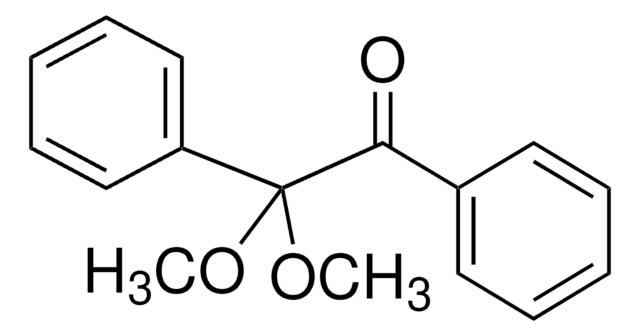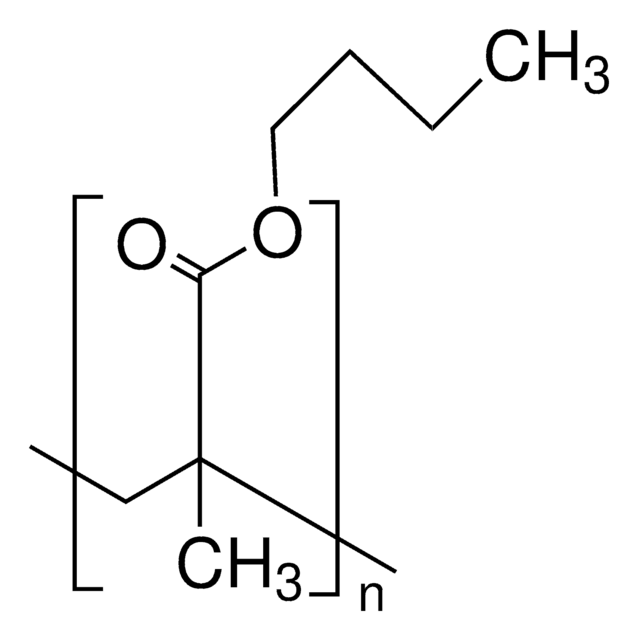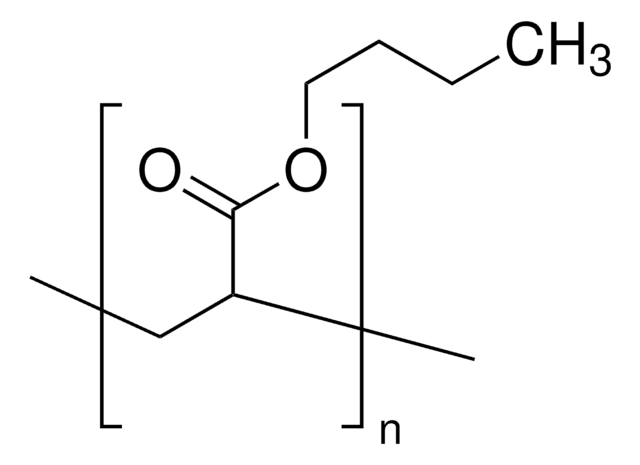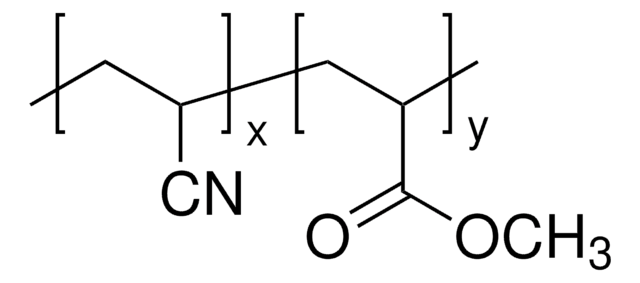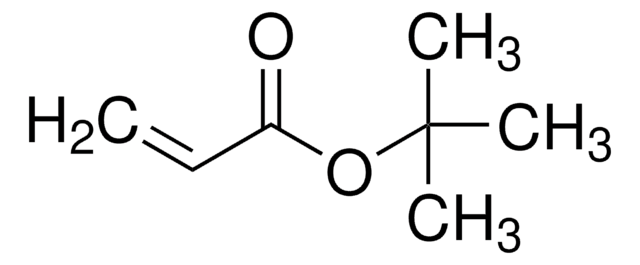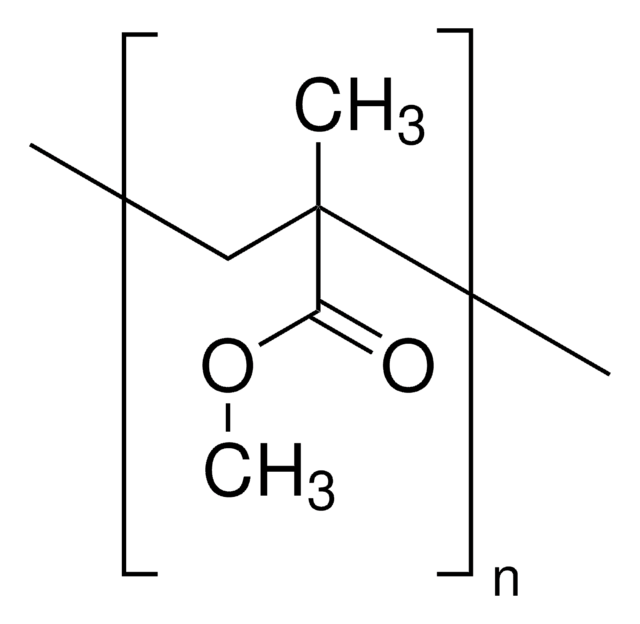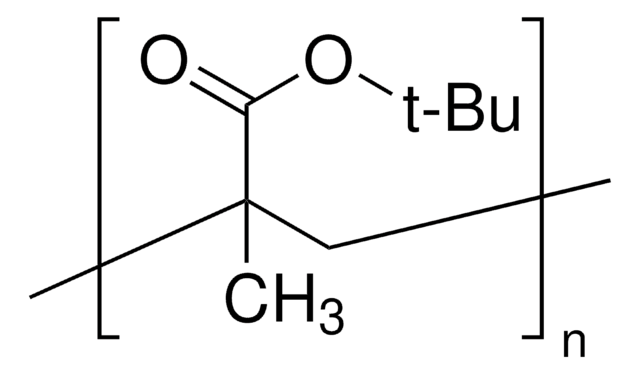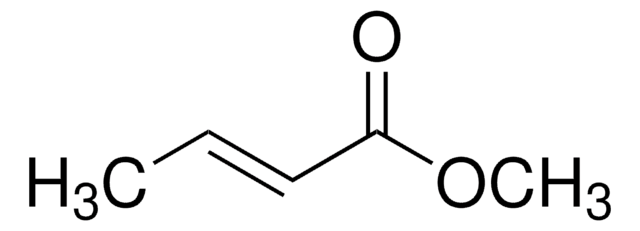181528
Poly(butyl methacrylate)
inherent viscosity 0.470-0.560 dL/g
Synonym(s):
PBMA
Sign Into View Organizational & Contract Pricing
All Photos(3)
About This Item
CAS Number:
EC Number:
MDL number:
UNSPSC Code:
12162002
PubChem Substance ID:
NACRES:
NA.23
Recommended Products
form
powder
Quality Level
mol wt
200000
refractive index
n20/D 1.483
inherent viscosity
0.470-0.560 dL/g
density
1.07 g/mL at 25 °C (lit.)
SMILES string
CCCCOC(=O)C(C)=C
InChI
1S/C8H14O2/c1-4-5-6-10-8(9)7(2)3/h2,4-6H2,1,3H3
InChI key
SOGAXMICEFXMKE-UHFFFAOYSA-N
Looking for similar products? Visit Product Comparison Guide
General description
Poly(butyl methacrylate) is a highly biocompatible polymer widely usedin drug delivery coatings.
Application
Poly(butyl methacrylate) has been used as a matrix to fabricate NO-releasing polymer films by solvent casting approach.
It can be used to prepare thermoresponsive microfibers with excellent mechanical properties. PBMA-containing microfibers can be used as temperature-modulated cell separation materials.
It can be used to prepare thermoresponsive microfibers with excellent mechanical properties. PBMA-containing microfibers can be used as temperature-modulated cell separation materials.
Signal Word
Warning
Hazard Statements
Precautionary Statements
Hazard Classifications
Skin Sens. 1
Storage Class Code
11 - Combustible Solids
WGK
WGK 3
Flash Point(F)
Not applicable
Flash Point(C)
Not applicable
Personal Protective Equipment
dust mask type N95 (US), Eyeshields, Gloves
Choose from one of the most recent versions:
Already Own This Product?
Find documentation for the products that you have recently purchased in the Document Library.
Temperature dependent photoluminescence down to 4.2 K in EuTFC.
Haugen and Johansen TH
Journal of Luminescence, 128(9), 1479-1483 (2008)
Mariano Licciardi et al.
International journal of pharmaceutics, 433(1-2), 16-24 (2012-05-12)
Polymeric microparticles encapsulating two model hydrophobic drugs, beclomethasone dipropionate (BDP) and flutamide (FLU) were prepared by using the high pressure homogenization-solvent evaporation method starting from a oil-in-water emulsion. For the preparation of polymeric microparticles a α,β-poly(N-2-hydroxyethyl)-D,L-aspartamide (PHEA) graft copolymer with
Birthe V Nielsen et al.
Biomedical materials (Bristol, England), 6(1), 015003-015003 (2011-01-06)
Towards the evaluation of non-permanent dental coatings for their capacity to impart dental-care benefits, thin films of a homologous series of comb-like poly(alkyl methacrylate)s (ethyl to octadecyl) have been deposited, from aqueous latex formulations, onto dentally relevant substrates. AFM studies
Masamichi Nakayama et al.
Macromolecular bioscience, 12(6), 751-760 (2012-04-21)
Thermoresponsive surfaces are prepared via a spin-coating method with a block copolymer consisting of poly(N-isopropylacrylamide) (PIPAAm) and poly(butyl methacrylate) (PBMA) on polystyrene surfaces. The PBMA block suppresses the removal of deposited PIPAAm-based polymers from the surface. The polymer coating affects
Jingguo Shen et al.
Journal of the American Chemical Society, 130(33), 10866-10867 (2008-07-24)
We demonstrate the self-assembly through fluorophilic interactions of a blend of perfluorocarbon (RF) end-functionalized polystyrene and the corresponding RF-polybutylmethacrylate into optically transparent materials that retain domain characteristics typical of the component polymers but show well-defined lamellar nanostructured morphologies that qualitatively
Articles
Self-assembled monolayers (SAMs) have diverse applications; article compares benefits of alkylthiolates on gold SAM systems.
Our team of scientists has experience in all areas of research including Life Science, Material Science, Chemical Synthesis, Chromatography, Analytical and many others.
Contact Technical Service